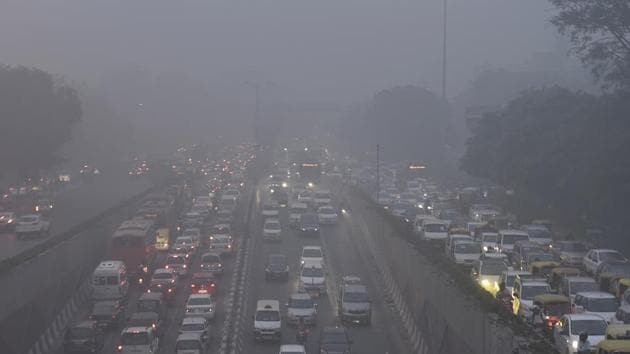Harsh Vardhan urges neighbouring states to help tackle Delhi pollution
Delhi’s air is heavily impacted by activities in the Delhi-NCR, which has increasingly become the focus of action to tackle poor air quality in the capital.
Environment minister, Harsh Vardhan, met senior officials from Punjab, Haryana, Uttar Pradesh, Rajasthan and Delhi to receive a briefing on the actions taken to tackle air pollution on Tuesday.

On top of the agenda was the stubble burning, where farmers burn the residual crop to clear their fields, releasing vast plumes of smoke that are carried by winds to neighbouring Delhi. Delhi has historically had two severe episodes of air pollution, that coincide with stubble burning episodes in states like Punjab, Haryana, Uttar Pradesh, Rajasthan and Delhi.
Taking note of their contribution to poor air quality the National Green tribunal banned crop residue burning in the five states in November 2015. However, there have been multiple challenges to implementing this ban. Farmers have resisted such a move because they do not have other viable ways of getting their fields ready for the next cropping season. The governments are required to provide incentives to small farmers to stop the practice.
The NGT also put in place fines for those found to be burning their residual crops depending on the size of their landholding the penalty ranges from Rs. 2500 to Rs. 15 000.
The Central Pollution Control Board (CPCB) the country’s apex regulatory body for pollution, said that they had formed 40 teams to monitor compliance.
The Delhi NCR region grapples with acute smog problem during the winter months when air is relatively still, especially during Diwali time, which is falling on October 19 this year.The environment ministry has launched a sustained campaign to spread awareness among school children,about burning crackers which aggravates Delhi’s air pollution problem. The part played by school children in banning of cracker use has been a bright spot in India’s battle against air pollution.
The National Green Tribunal has taken a dim view of state government’s failure to check crop burning. The NGT warned that officials in August that they would not receive their salaries if they did not come up with action plans to tackle stubble burning.
The environment minister , however, said he expects the Delhi’s air to be much cleaner this winter season, and over a period of five years the government expects air pollution levels to drop by 30-35 %.
Delhi’s graded action plan, which was formulated on the direction of the Supreme Court, will come into force on October 15th this year. The plan includes provisions like closing down the highly polluting Badarpur power plant. Power plants are the other major contributor to Delhi’s air pollution. They a lone contribute to 11% of the capital’s PM2.5 load (Particulate matter that is 2.5 microns or less in diameter).
At the national level, the government had set a deadline of end of 2017 for coal powered plants to meet pollution standards However, sources within the ministry said it was unlikely the plants will be able to meet them and they are likely to get extensions on the deadline to meet the norms.





